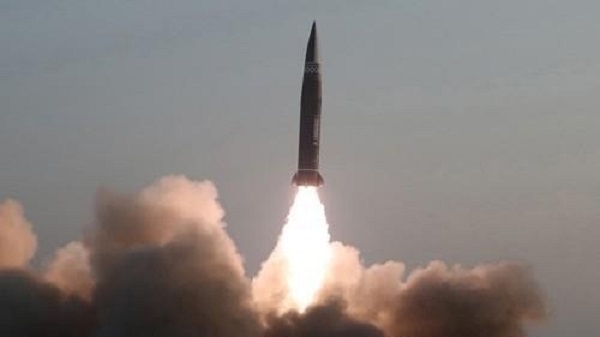Seoul, (Samajweekly) North Korea fired what appears to be a submarine-launched ballistic missile (SLBM) toward the East Sea on Tuesday, the South Korean military said, in yet another setback to Seoul’s efforts for peace with Pyongyang.
The short-range missile was launched from waters east of Sinpo, a city on the North’s east coast, according to the Joint Chiefs of Staff (JCS).
The launch was detected at 10.17 a.m., Yonhap News Agency reported.
The missile travelled about 590 km at a top altitude of around 60 km, an informed source said, noting the possibility that the North might have used a submarine as a launch platform this time.
The North previously conducted an SLBM test in 2015 and 2019. The South’s military believes that it used a barge rather than a submarine during the past tests.
Officials said that Tuesday’s launch came after South Korean and US intelligence authorities had detected signs of a possible weapons test near Sinpo, where the North has been pushing to build a 3,200-tonne submarine capable of SLBM operations.
“The intelligence authorities of South Korea and the US are currently conducting a thorough analysis regarding additional details on the missile,” the JCS said.
The North’s latest missile test marks its eighth known projectile launch this year.
It previously fired a new hypersonic missile, called the Hwasong-8, on September 28.
The US Indo-Pacific Command condemned the missile launch, calling on the North to refrain from “any further destabilising acts”.
China called for concerned countries to exert “restraint”, saying the situation on the Korean Peninsula stands at a critical period.
North Korea watchers cited a possibility that a new, small-sized SLBM, capable of striking targets in the South or Japan, might have been fired from a 2,000-tonne submarine on Tuesday.
The North displayed a mini-SLBM at a defence exhibition in Pyongyang last week.
In recent years, Pyongyang has boasted its development of various SLBMs, including the “Pukguksong-4” and the “Pukguksong-5”, which were unveiled during military parades in October last year and January, respectively.










